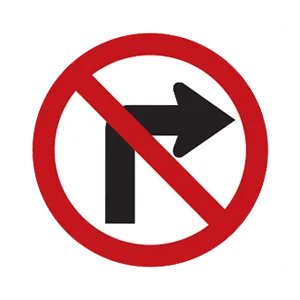FREE Maine DMV Practice Test #7 Page 6 of 7
For January 2025, Maine's DMV practise exams have been updated. It includes questions based on the most important traffic signals and legislation for 2025 from the Maine Driver Handbook. To study for the DMV driving permit test and driver's licence exam, use actual questions that are very similar (often identical!) to the DMV driving permit test and driver's licence exam.
Each question on the practise exam has a tip and explanation to help you recall the ideas. Questions about traffic rules, traffic signs, and driving statutes, as well as knowledge from the Driver Handbook, will be included in the written portion of the official Maine DMV test.
You must properly answer 50 of the 60 questions to receive a passing mark. To help you prepare for your Maine instruction permit or driver's licence, take our DMV practise test.
The DMV exam is offered in a variety of languages.
Using any form of testing help will result in an automatic fail, and the DMV may take further action against your driver's licence, so avoid it.
41 . You are approaching an intersection when the traffic light changes from green to solid yellow. You should:
When approaching an intersection with a solid yellow traffic light, slow to a stop before entering the intersection, if it is safe to do so. If you can't stop safely, drive carefully through the intersection.
42 . When driving in a construction zone:
You may encounter unexpected conditions in a construction zone. For the safety of yourself, other drivers, and construction workers, drive with extraordinary caution.
43 . When you are behind a motorcycle, you should:
When following a motorcyclist, allow for at least a three- to four-second following distance. Motorcycles can stop quickly and following them too closely endangers your life and that of the motorcyclist. If the motorcyclist should fall, you need extra distance to avoid the rider. The chances of a fall are greatest on wet and icy roads, gravel roads, and metal surfaces such as bridges, gratings, and streetcar or railroad tracks.
44 . This road sign means:

This sign marks a high occupancy vehicle (HOV) lane. HOV lanes are reserved for use by buses and vehicles with a driver and one or more passengers, as indicated on the sign.
45 . When driving under icy or snowy conditions, which driving technique will help drivers avoid crashes?
Reduce your speed when roads are snow-covered or icy. Doing this and increasing your following distance are the most important techniques for avoiding crashes under snowy or icy conditions.
46 . What should you do when you see this sign?

A round sign means you are approaching a railroad crossing. This sign is posted a few hundred feet in front of the tracks and tells drivers to slow down, look, listen, and prepare to stop.
47 . When driving past a row of parked vehicles, you should:
Keep a space between your vehicle and parked vehicles. A person may step out of a parked vehicle or out from between the parked vehicles, or a vehicle may start to pull out suddenly. Drive with caution and be alert to the movements of pedestrians and other drivers.
48 . When following a driver whose view to the rear of their vehicle is blocked, increase your following distance to:
Increase your following distance to a minimum of three to four seconds when following a driver whose view to the rear of their vehicle is blocked. The drivers of trucks, buses, vans, or cars pulling campers or trailers can’t see you very well if you are too close to them. They may slow down suddenly without knowing you are there.
49 . Cell phones can be a serious source of driver distractions.
When on the road, drivers should not use cell phones, computers, or other distracting devices, except to report a crash or emergency. Your full attention should be devoted to driving.
50 . This road sign means:




